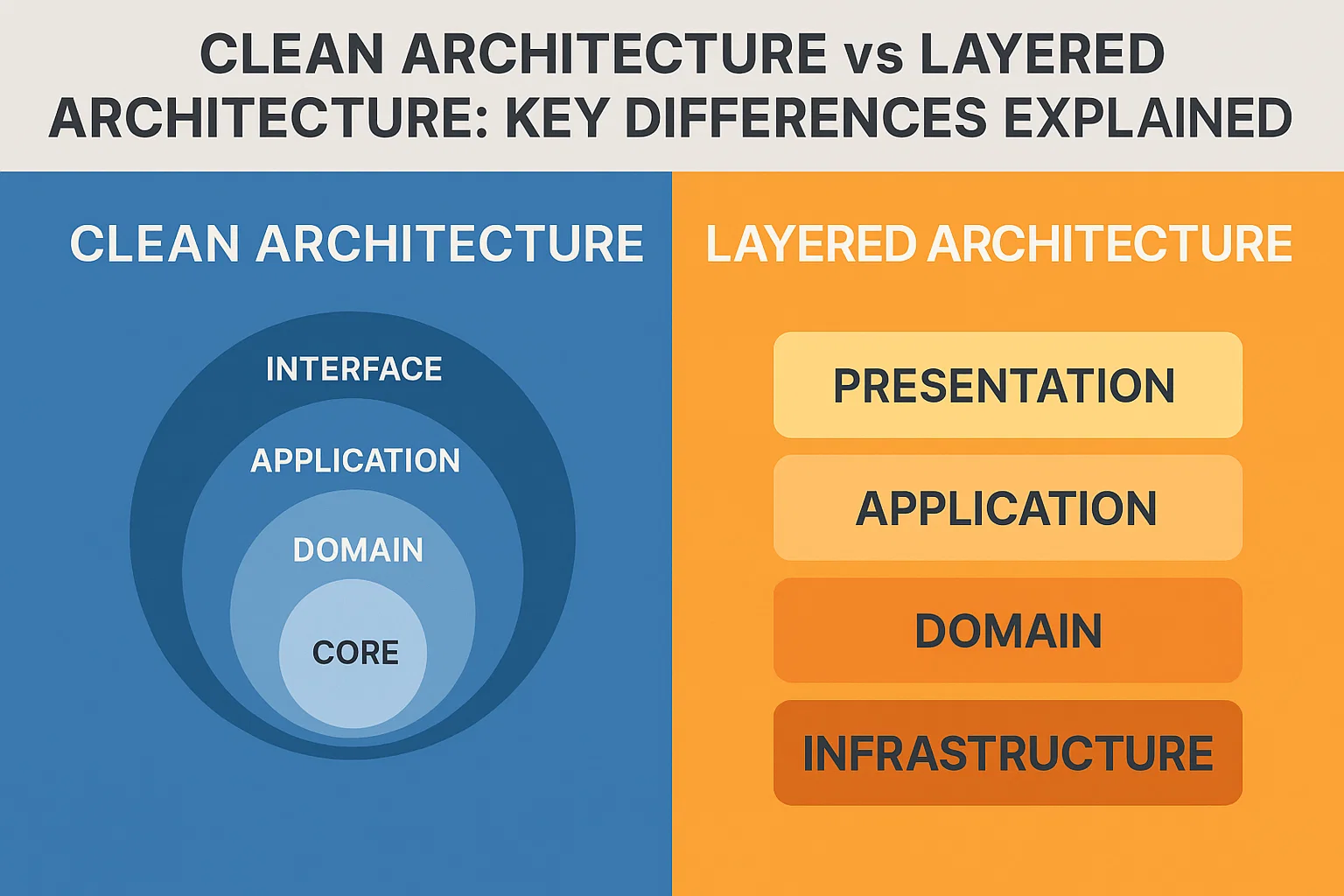Front-End Development Trends in 2025: What Every Developer Should Know
27 August 2025

While both Clean Architecture and Layered Architecture aim to organize software for better maintainability, they differ in structure and philosophy. Understanding these differences is critical when designing systems in 2025.
Layered Architecture:
- Organizes code into horizontal layers (presentation, business, data).
- Often results in tight coupling if not carefully managed.
- Easier for beginners but less flexible for large-scale applications.
Clean Architecture:
- Organizes systems around independent layers (entities, use cases, interfaces, frameworks).
- Enforces the dependency rule—all dependencies point toward the core business logic.
- Provides greater testability, flexibility, and adaptability to future technologies.
Key Differences:
1. Dependency Flow – Layered can point both ways; Clean is strictly inward.
2. Technology Independence – Clean isolates business rules from external frameworks, while Layered often ties them together.
3. Maintainability – Clean is more future-proof for complex systems.
For small projects, Layered Architecture may suffice. But for enterprise systems and long-term projects, Clean Architecture is the superior choice.